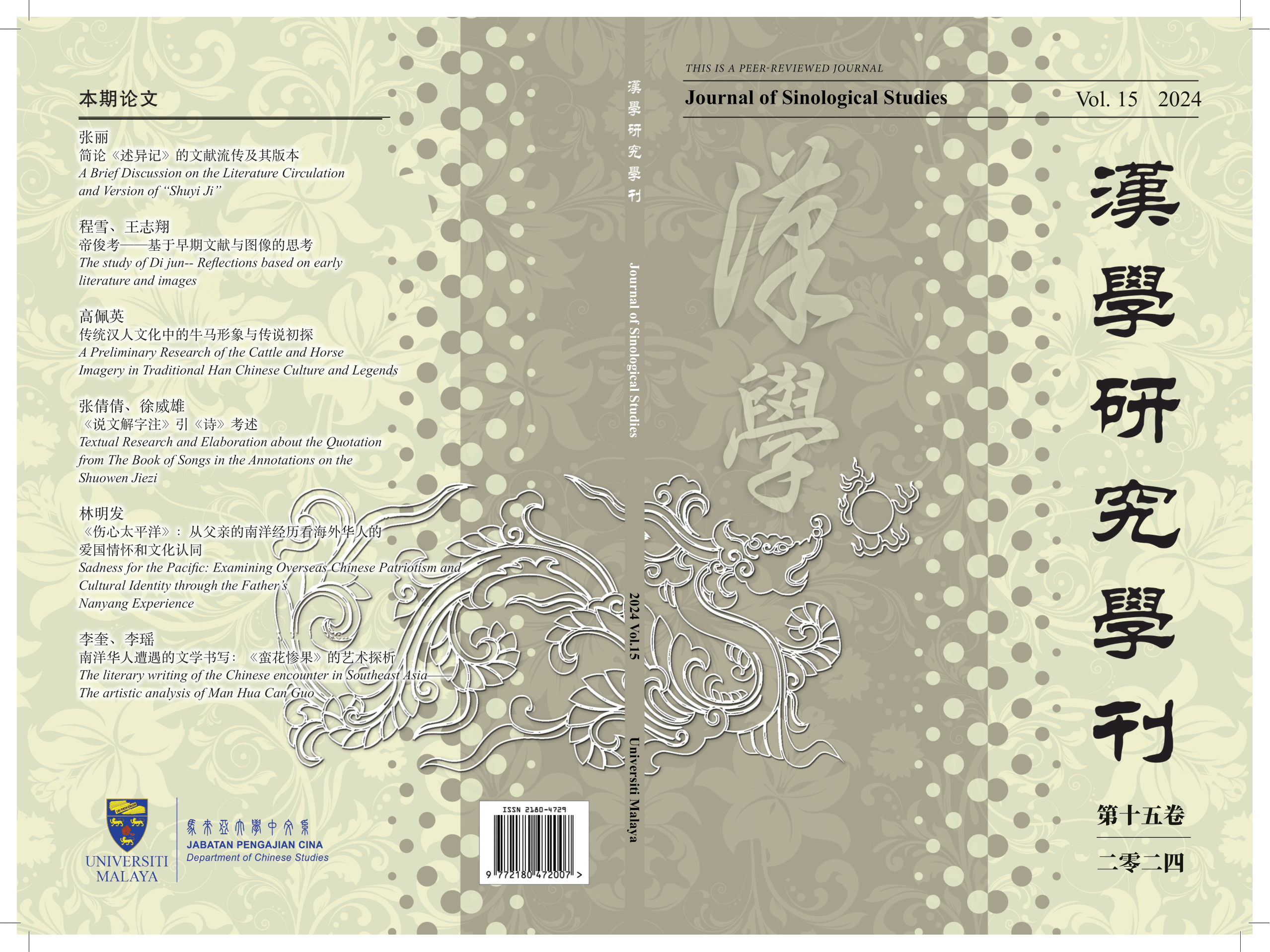南洋华人遭遇的文学书写 —《蛮花惨果》的艺术探析
The literary writing of the Chinese encounter in Southeast Asia ——The artistic analysis of Man Hua Can Guo
Abstract
《蛮花惨果》是中国南来作家李西浪早期的小说创作。小说以马来亚社会三个不同社会阶级的人物为中心展开故事,展现了当时马来亚社会的经济、文化、医疗、教育状况,揭示了当时存在的一些社会问题;三个人物形象各异,展现了“士”“工”“商”三个不同社会阶级的人们的生存状况以及其面临的困境,是不同阶级百姓的缩影;在创作艺术层面,小说虽然仍沿袭着中国传统的小说创作的语言体式,但是在字体行间都洋溢着浓厚的南洋地域特色,是南迁华人在融入马来亚社会的印记,对于我们了解当时马来亚社会人们的生存状况有重要意义。
Manhua Canghuo (Wild Flowers and Tragic Fruits) is an early novel by Li Xilang, a Chinese writer who migrated from China. The novel unfolds the story with characters from three different social classes in Malayan society as the core plot, showing the economic, cultural, medical and educational conditions of Malayan society at that time, and revealing some social problems that existed at that time. Three characters have different images, showing the living conditions and difficulties faced by people from three different social classes of "scholars", "workers" and "merchants", which are microcosms of people from different classes. In terms of creative art, although the novel still follows the language style of traditional Chinese novel creation, the fonts and lines are full of strong Nanyang regional characteristics, which is the mark of the Chinese who migrated from China to integrate into Malayan society, and is of great significance for us to understand the living conditions of people in Malayan society at that time.
Downloads


